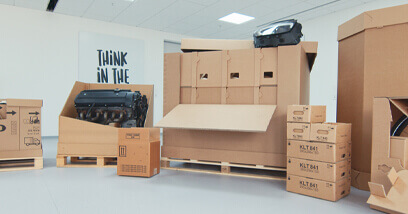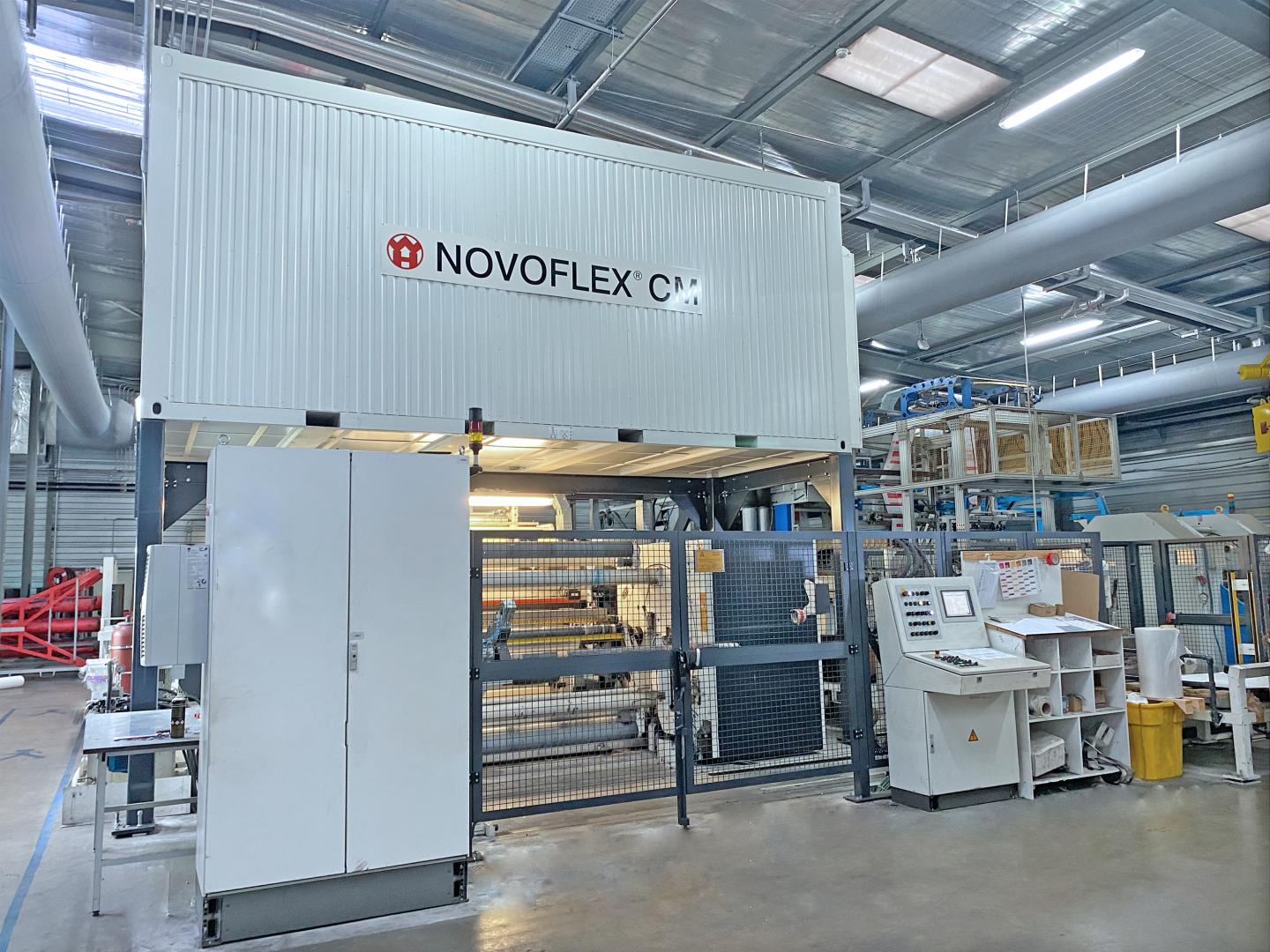Bulk Container Recycling Initiatives: Sustainably Navigating Market
Bulk Container Recycling Initiatives: Sustainably Navigating Market
Blog Article
Reliable Industrial Recycling Solutions for Lasting Packaging: A Comprehensive Guide
In today's progressively environmentally-conscious globe, the demand for lasting product packaging services has never been greater. To fulfill this demand, organizations across markets are proactively looking for reliable commercial recycling solutions. Nonetheless, navigating the facility landscape of sustainable packaging can be challenging without a comprehensive overview. That's where this extensive overview on effective commercial recycling services for sustainable packaging can be found in. By discovering essential locations such as packaging product selection, creating for recyclability, implementing recycling infrastructure, working together with recycling companions, and monitoring and determining recycling success, this guide will certainly equip you with the understanding and devices needed to make informed choices and drive positive modification within your organization. Whether you're a product packaging professional, sustainability supervisor, or simply curious about the topic, this guide will certainly offer important understandings and strategies to aid you navigate the globe of sustainable product packaging.
Packaging Material Selection
The option of product packaging materials plays an important role in ensuring the sustainability of industrial recycling remedies. The choice of materials is crucial in minimizing ecological effect and optimizing reusing efficiency when it comes to sustainable packaging. Selecting the appropriate products can help in reducing waste generation, preserve sources, and advertise a round economic situation.
Materials like cardboard, paper, glass, and specific types of plastics can be reused multiple times without shedding their quality. On the other hand, products that are difficult to reuse, such as non-recyclable compounds or blended plastics, can develop difficulties for the reusing process and may end up in landfills or burners.
One more factor to consider is using eco-friendly and renewable products. Product packaging made from eco-friendly resources, such as plant-based plastics or biopolymers, can assist lower reliance on nonrenewable fuel sources and alleviate environment modification. Furthermore, biodegradable materials break down naturally in time, lowering the build-up of waste in landfills.
Furthermore, the weight and quantity of packaging products should be lessened to minimize transport costs and power consumption. Light-weight products not only need fewer resources throughout manufacturing yet also add to decrease carbon discharges throughout transportation.
Creating for Recyclability
In order to guarantee the recyclability of packaging materials, thoughtful layout is necessary. Creating for recyclability involves creating product packaging that can be conveniently arranged, separated, and refined in recycling centers. One vital facet of designing for recyclability is the option of materials. Product packaging developers must prioritize using materials that are extensively accepted for reusing and have developed recycling infrastructures. Products such as glass, light weight aluminum, and specific types of plastic, like PET and HDPE, are typically recycled and should be chosen over materials that are pricey or tough to reuse.
One more crucial factor to consider in developing for recyclability is the elimination of unneeded elements or materials. By decreasing the number of layers, finishes, and additional parts, packaging can be made easier and simpler to recycle. Additionally, developers should intend to lower the usage of combined materials, as they can make complex the recycling process.

Implementing Recycling Framework
Reliable application of reusing facilities is critical for the success of industrial recycling solutions. Without correct infrastructure in position, the recycling process becomes ineffective and ineffective, hindering the total goal of sustainable packaging.
To execute reusing infrastructure successfully, numerous crucial elements need to be taken into consideration. Firstly, there should be a well-organized collection system that helps with the splitting up and collection of recyclable products. This can consist of designated reusing containers in public rooms, along with partnerships with waste management companies for curbside pick-up and sorting.
When gathered, the recyclable products need to be carried to reusing centers in a prompt fashion. This calls for effective logistics and my blog transportation networks, making certain that the products get to the ideal centers without hold-up.
At the recycling centers, advanced sorting and handling modern technologies ought to be in area to separate different kinds of materials properly. This consists of making use of automated sorting devices, optical scanners, and manual sorting strategies.
In addition, there should be a robust market need for recycled products. This can be accomplished through collaborations with manufacturers and industries that make use of recycled materials in their production processes. Producing a steady market for recycled products incentivizes the recycling market and promotes the round economy.
Teaming Up With Recycling Partners

One trick facet of working together with reusing partners is the facility of clear communication channels. It is essential to develop open lines of communication to facilitate the exchange of info, updates, and responses. This permits both events to remain educated concerning the progression of recycling campaigns and attend to any type of challenges or problems that might arise.
Furthermore, cooperation can entail joint efforts in designing and implementing reusing programs. Reusing companions can supply useful insights and support in developing reliable collection systems and figuring out one of the most proper recycling innovations. By collaborating, services and reusing partners can optimize the reusing process and reduce waste.
In addition, cooperation can expand past the functional elements of reusing. It can also include campaigning for and education and learning efforts. By signing up with pressures, organizations and recycling partners can raise recognition concerning the relevance of reusing and advertise the fostering of sustainable product packaging techniques amongst consumers and various other stakeholders.
Monitoring and Measuring Recycling Success
To make sure the performance of industrial recycling remedies and the achievement of lasting product packaging objectives, it is important for organizations and their recycling companions to establish an extensive system for monitoring and measuring recycling success (processing company). Tracking and hop over to here gauging recycling success permits services to analyze the effect of their reusing efforts, determine locations for renovation, and set significant targets for future development
One method to track recycling success is advice with making use of data collection and analysis tools. By gathering data on the amount of product packaging waste generated, the percent of waste that is reused, and the kinds of products being reused, organizations can acquire beneficial understandings right into their recycling performance. This information can then be evaluated to recognize fads, patterns, and areas of ineffectiveness.
An additional important facet of tracking and measuring reusing success is establishing standardized and clear metrics. This allows services to compare their performance against industry criteria and track their development with time. Metrics such as reusing prices, waste diversion prices, and greenhouse gas discharges can give a measurable measure of a business's reusing success.

Verdict
In final thought, executing effective industrial recycling services for lasting product packaging requires cautious consideration of packaging product option, designing for recyclability, executing recycling facilities, collaborating with recycling companions, and monitoring and determining reusing success. By integrating these techniques, businesses can contribute to a more environmentally-friendly and lasting method to packaging, reducing waste and promoting the round economy.
By discovering vital areas such as packaging material option, designing for recyclability, applying reusing facilities, working together with recycling partners, and monitoring and gauging recycling success, this guide will furnish you with the expertise and tools needed to make enlightened choices and drive positive change within your company. Packaging designers need to prioritize the usage of products that are commonly accepted for recycling and have developed recycling infrastructures.Collaboration with reusing companions is crucial for the successful implementation of industrial recycling options and the success of lasting product packaging objectives. By joining pressures, organizations and recycling partners can raise recognition regarding the value of recycling and advertise the adoption of sustainable packaging techniques among customers and various other stakeholders.
By collecting data on the quantity of product packaging waste produced, the percent of waste that is recycled, and the types of products being reused, services can obtain useful insights into their recycling performance.
Report this page